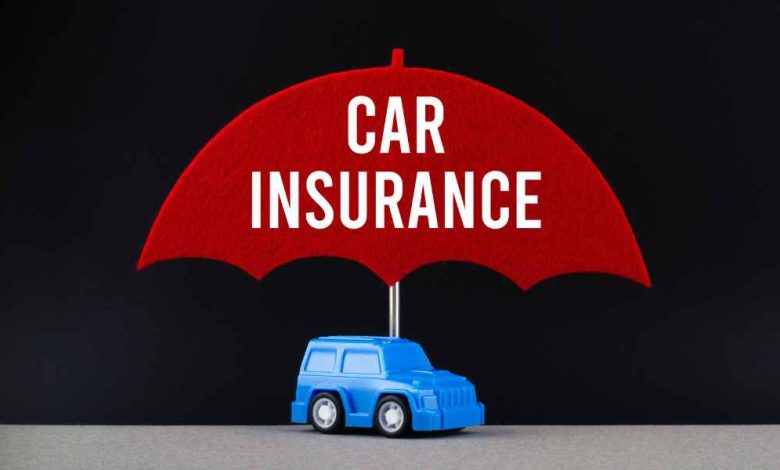Navigating the Maze of Car Insurance: A Comprehensive Guide
Navigating the Maze of Car Insurance: A Comprehensive Guide

In the fast-paced world of today, owning a car has become more of a necessity than a luxury. With the increasing number of vehicles on the road, the importance of having reliable car insurance cannot be overstated. Car insurance not only provides financial protection in case of accidents but is also a legal requirement in many places. In this comprehensive guide, we will delve into the intricacies of car insurance, helping you make informed decisions and navigate the complex landscape.
Understanding the Basics of Car Insurance
Car insurance is a contract between the policyholder and the insurance company, where the latter agrees to provide financial coverage for specified events in exchange for regular premium payments. The coverage typically includes protection against damage to the insured vehicle, liability for bodily injury or property damage to others, and medical expenses for the policyholder and passengers.
Types of Car Insurance Coverage
- Liability Insurance: This is the most basic form of car insurance and covers the policyholder’s legal liability for bodily injury and property damage to others in the event of an accident.
- Collision Coverage: This type of coverage pays for the repair or replacement of the insured vehicle in case of a collision with another vehicle or object.
- Comprehensive Coverage: Comprehensive coverage provides protection for non-collision events, such as theft, vandalism, natural disasters, or accidents involving animals.
- Uninsured/Underinsured Motorist Coverage: This coverage steps in when the at-fault party in an accident does not have insurance or has insufficient coverage to pay for the damages.
Factors Influencing Car Insurance Premiums
Several factors contribute to the determination of car insurance premiums. Understanding these factors can help you make informed choices and potentially lower your insurance costs.
- Driving Record: A clean driving record with no accidents or traffic violations is likely to result in lower premiums, as it indicates a lower risk for the insurance company.
- Vehicle Type: The make and model of your vehicle, as well as its age, can impact insurance premiums. High-performance or luxury cars generally have higher premiums due to their repair costs.
- Coverage and Deductibles: The extent of coverage you choose and the deductible amount (the out-of-pocket expense you agree to pay before insurance kicks in) directly affect your premiums. Higher coverage and lower deductibles usually result in higher premiums.
- Location: The area where you live also plays a role. Urban areas with higher traffic density and crime rates may have higher premiums compared to rural areas.
Shopping for Car Insurance
With numerous insurance providers and policies available, shopping for car insurance can be overwhelming. Here are some tips to simplify the process:
- Compare Quotes: Obtain quotes from multiple insurance providers to compare coverage and pricing. Online comparison tools can be invaluable for this purpose.
- Bundle Policies: Consider bundling your car insurance with other policies, such as home or renters insurance, to take advantage of multi-policy discounts.
- Discounts: Inquire about available discounts, such as safe driver discounts, good student discounts, or discounts for installing safety features in your vehicle.
- Review and Update: Regularly review your insurance coverage and update it as needed. Changes in your driving habits, vehicle, or life circumstances may warrant adjustments to your policy.
Understanding Deductibles and Coverage Limits
It’s crucial to comprehend the implications of deductibles and coverage limits in your insurance policy. The deductible is the amount you must pay out of pocket before your insurance coverage kicks in. Higher deductibles often result in lower premiums but require more significant upfront payments in the event of a claim.
Coverage limits, on the other hand, represent the maximum amount your insurance company will pay for a covered claim. It’s essential to choose coverage limits that adequately protect your assets and financial well-being.
Dealing with Claims and Customer Service
When it comes to choosing an insurance provider, excellent customer service is paramount. In times of need, you want a company that responds promptly and efficiently. Research customer reviews, testimonials, and the claims process of potential insurers to gauge their reliability.
If you ever need to file a claim, it’s crucial to understand the process and have all necessary documentation on hand. Reporting accidents promptly and providing accurate information can expedite the claims process and ensure a smoother experience.
Conclusion: Securing Your Journey with Car Insurance
In the dynamic world of automobiles, having the right car insurance is like having a safety net that protects you and your assets. Understanding the various types of coverage, factors influencing premiums, and shopping wisely for insurance can empower you to make informed decisions.
As you embark on the journey of car ownership, prioritize the security and peace of mind that a comprehensive insurance policy can provide. Stay informed, drive safely, and enjoy the open road with the confidence that comes from knowing you are well-covered by a reliable car insurance policy.


